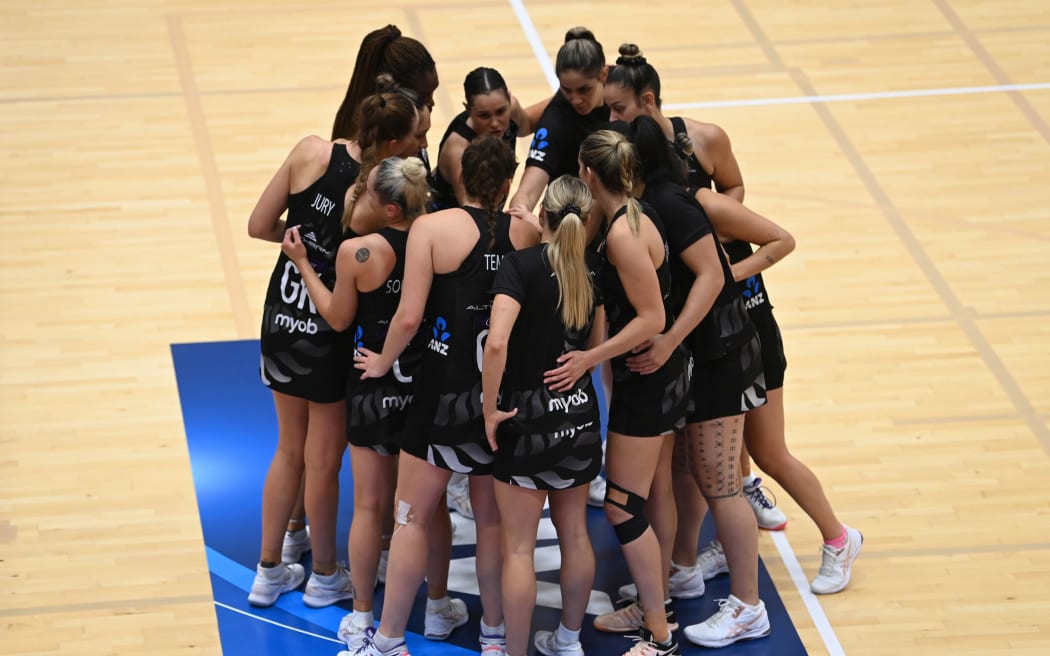
New Zealand team huddle. Photo: PHOTOSPORT
Analysis - Three weeks on from the Netball World Cup, sports reporter Bridget Tunnicliffe examines why the Australian Diamonds have won 12 titles, and the Silver Ferns five.
The Silver Ferns came fourth in South Africa, enduring their worst finish at the sport's pinnacle event after being beaten by Jamaica in the bronze medal match.
They lost to England in the semi-final. They didn't play eventual winners Australia at all at the tournament.
Before the World Cup, there were high hopes that the defending champion New Zealanders could win back to back titles for the first time.
The Diamonds were expected to be tough as always and Jamaica were tipped as a real chance to win the title for the first time, ending the dominance of New Zealand and Australia since the tournament's inception in 1963.
But there was every reason to believe that the Silver Ferns would be in the mix.
They managed to win bronze at the Commonwealth Games in Birmingham last year without three of their star players - Ameliaranne Ekenasio, Jane Watson and Karin Burger.
Furthermore, goal shoot Grace Nweke went into the last pinnacle event with just four Test caps, this time New Zealand's starting goal shooter was going to be ready from the get go.
Sadly disaster struck when Nweke was ruled out of the tournament with a knee injury after three matches.
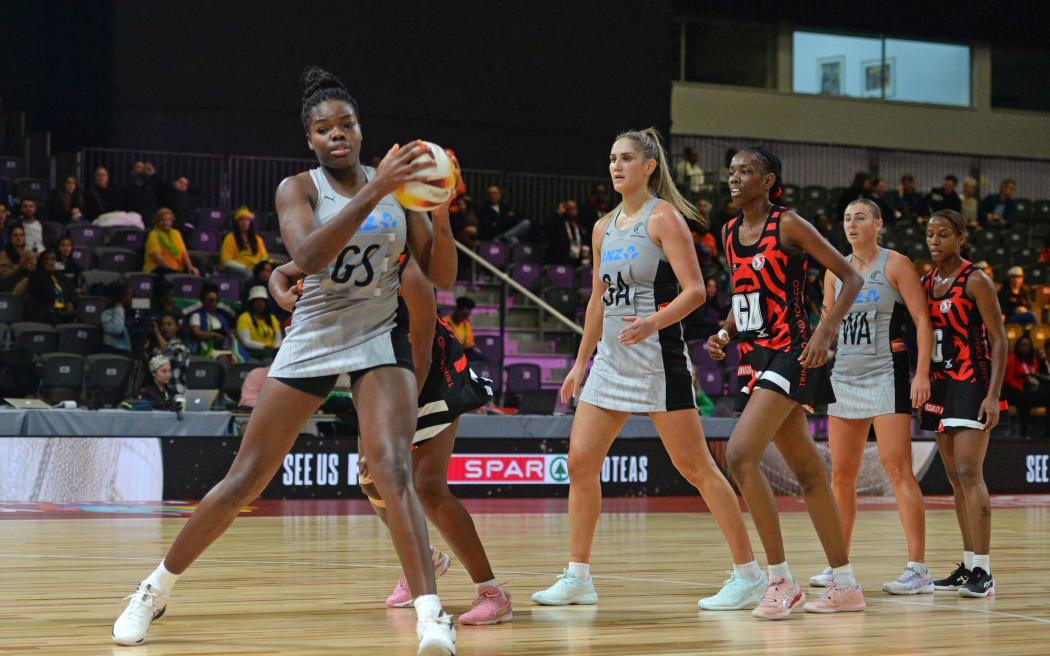
Grace Nweke only had a short stint at the World Cup. Photo: Photosport
Nweke made most pundits' lists as a player to watch at the World Cup and her absence from the team had a big impact.
The Silver Ferns might be criticised for relying too heavily on the 21-year-old but that's the way the game is set up.
Only two players out of seven can shoot, and the GS is typically the main scorer so losing your main strike shooter would hurt most teams.
At the same time the Silver Ferns didn't play at their best.
The biggest issue was getting the ball down court to the shooters and it looked like they were working twice as hard as their opposition to do that.
Something had to give, and it did in the final quarters against South Africa, Jamaica and England.
There was a time when the Maia Wilson-Ameliaranne Ekenasio-Gina Crampton front line was good enough to beat the Australian Diamonds in the 2021 Constellation Cup.
Ekenasio and Gina Crampton just didn't have the same presence they normally do and no one really saw it coming after both players had strong domestic seasons.
It also shows that other teams have caught up.
Why are the Diamonds so hard to beat?

Team Australia celebrates after winning the third Constellation Cup test, 2022. Photo: PHOTOSPORT
There is one team that could have coped with the loss of a star shooter.
In the World Cup gold medal match against England, the Australian coach seamlessly substituted shooters Cara Koenen and Steph Wood, with the less experienced Sophie Garbin and Kiera Austin during the second quarter.
Last year it took the Diamonds just two games to get over the loss of pregnant star shooter Gretel Bueta, regarded as the player of the tournament at the Commonwealth Games.
The Silver Ferns took a 2-nil lead in October's Constellation Cup, before the Diamonds regrouped and won the next two to recoup the silverware.
While experience counts for a lot, the Australian Diamonds have highlighted depth probably trumps everything.
Out of the top four sides, Australia went into the Netball World Cup with the least number of Test caps - 408.
At the other end of the scale England had a whopping 828, while Jamaica were next with 597, then the Silver Ferns with 478.
So where does the depth come from? Well it's largely a numbers game.
Across eight teams there are only 80 spots available in Australia's Super Netball competition.
In this year's edition, Jamaica accounted for six of the 14 imports in total, England had four, while South Africa, Trinidad and Tobago, and Malawi had one each.
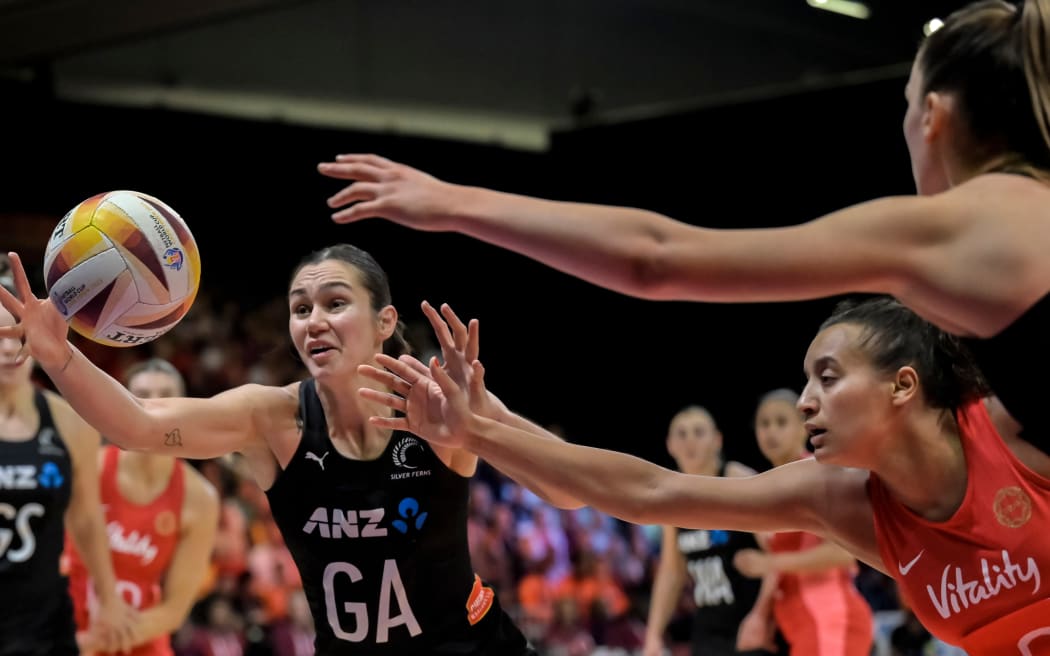
Ameliaranne Ekenasio (Captain) of New Zealand Silver Ferns during the Netball World Cup Semi-Final 1 match between England and New Zealand at the CTICC in Cape Town, South Africa on Friday, 05 August 2023 Photo: Mandatory credit: Christiaan Kotze/C&C Photo Agency Photo: Christiaan Kotze/C&C Photo Agency
It's less than the record 22 import players used in 2020 but it meant that there were just 64 spots left for Australian players.
There are 360,000 registered netball players in Australia so mathematically that's a 0.02 percent chance of making it to the big time.
Compare that to New Zealand, where there are 140,000 registered netball players.
The ANZ Netball Premiership has a one import per team limit across six teams and this year there were just four import players out of 60.
That left 56 spots for local players. So while it's a crude measure you've got a 0.04 percent chance of playing in New Zealand's top league - double the odds in Australia.
The Australian players have to fight tooth and nail to get into their elite league and there is always a player nipping at their heels.
The players are so well prepared before they step out on court for their first international Tests because of the battle they go through just to get on court in their domestic competition.
It's probably no consolation to New Zealand netball fans but even the legendary Australian coach Norma Plummer has said more than once that by rights the Diamonds should win every World Cup and that the Silver Ferns punch above their weight.
It's that tough to get consecutive wins over their arch-rivals, that the last time the Silver Ferns had three wins in a row over Australia was way back in 2006.
World Cup cycles
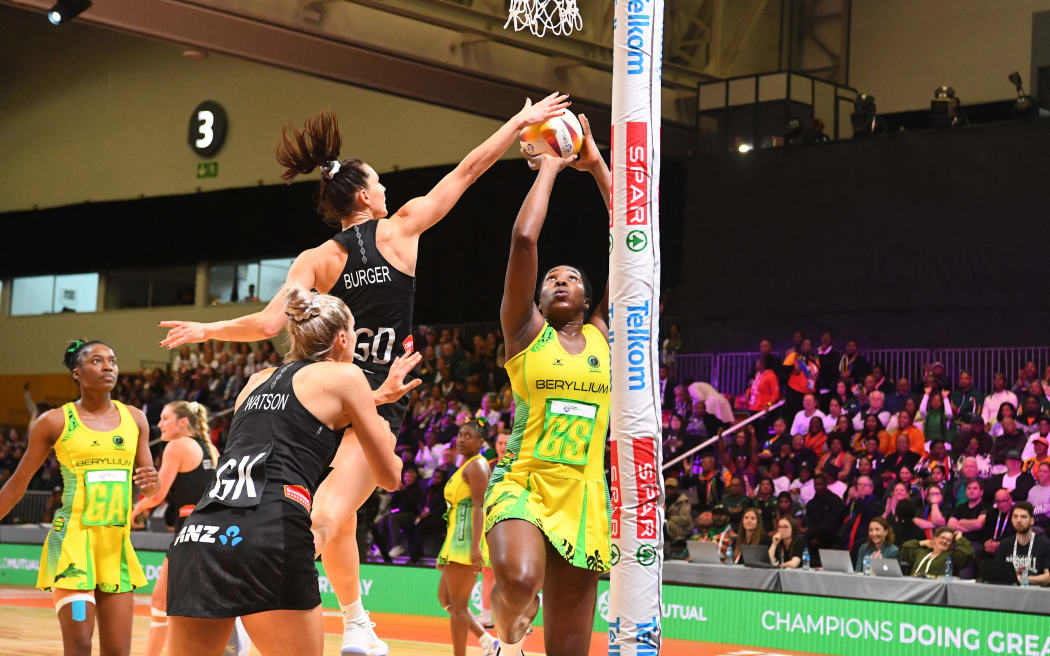
Jamaica's Jhaniele Fowler scores against New Zealand's Karin Burger during their bronze medal play-off in the Netball World Cup in Cape Town. Photo: AFP
A lot of things have to align for teams outside of Australia to win a World Cup.
Gina Crampton was the most experienced Silver Fern named for the World Cup in South Africa with 63 test caps to her name. Phoenix Karaka had 50 Test caps and was the only player named heading to a third World Cup.
It was a huge contrast to the 2019 World Cup team, which had veterans Maria Folau, Casey Kopua, and Laura Langman, who were at their fourth World Cup.
Add Katrina Rore, who was at her third World Cup, and you had an incredible 500-plus Test caps just between that quartet.
The reality is the Silver Ferns are unlikely to have that number of test caps at a pinnacle event ever again.
As netball has become more professional and physical, it's also become a sport that is increasingly hard on the body.
A lot of Australian Diamonds players hang up their bib by their early 30s. As the oldest members of the team Steph Wood (31) and Ash Brazill (33) called time on their careers at the end of the World Cup.
England are sure to lose hundreds of test caps before the next pinnacle event.
Does God given talent and physical attributes play a part? Absolutely!
The 1.98m Jamaican shooter Jhaniele Fowler has been terrorising opposition teams for years but at 34 might have played her last World Cup.
When she does eventually retire the Sunshine Girls will feel like a different team.
What could help?

Silver Ferns coach Dame Noeline Taurua with Caitlin Bassett after winning the Suncorp Super Netball title in 2018 in Australia. Photo: DCimages | Daniel Carson / Photosport
Some people would like to see New Zealand teams compete with Australia once again in a trans-Tasman competition to give them more exposure to tough competition.
The ANZ Premiership was set up in 2017 when the two countries went their separate ways and the product has stayed much the same since then.
Netball New Zealand have been involved in discussions with Netball Australia about introducing cross-over games at the end of the respective domestic competitions.
Hopefully, Netball New Zealand can push for more than just the top two teams from each domestic competition squaring off against each other.
In an ideal world, the ANZ Premiership could be reduced from three to two rounds, and in that extra month all six teams could play games against sides in the Australian competition.
Fans want to see down-to-the wires games.
The last two grand finals of the New Zealand domestic league saw score margins of 19 and 18 goals.
The competitiveness of the Australian league was off the chain this year - with the last three games of the finals series having score margins between one and two goals.
As an aside, World Netball must ensure in future that the Netball World Cup is not held at the same time as the FIFA Women's World Cup.
The Netball World Cup had to compete for media coverage with the biggest women's sporting event in the world held in the two countries who dominate netball.
In Australia, the Diamonds World Cup win barely registered while the nation was wrapped up in the Matilda's dream run at the FIFA World Cup on home soil.
Normally Netball Australia could leverage off the success of the Diamonds, but it's potentially cost them millions in missed sponsorship opportunities.
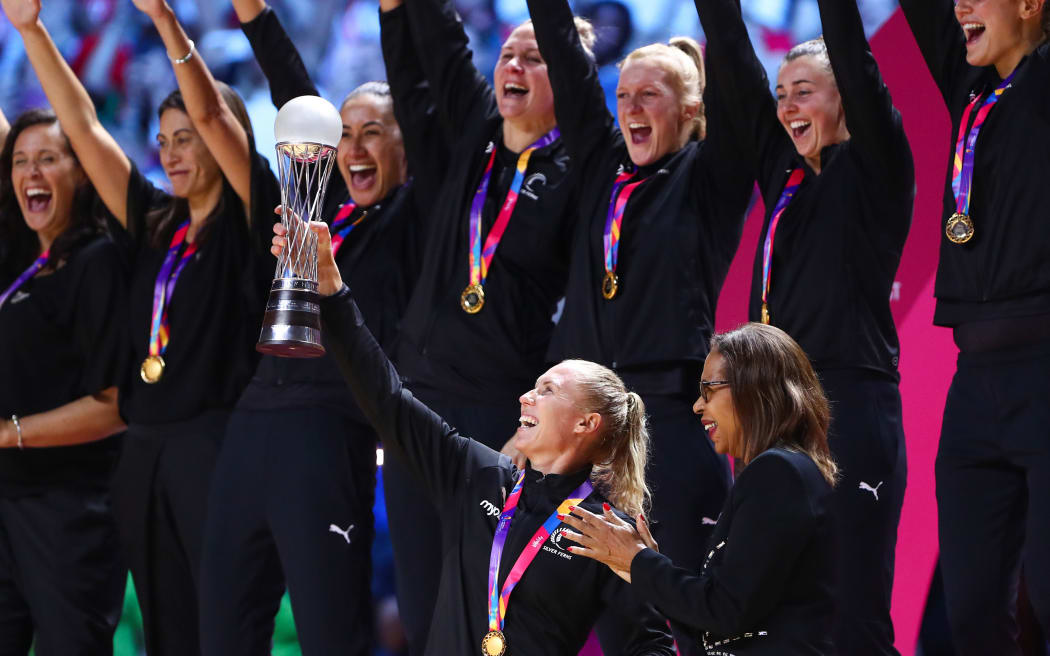
Netball World Cup 2019 winners, the Silver Ferns. Photo: © SWpix.com (t/a Photography Hub Ltd)


